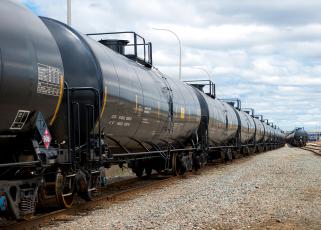California Governor Gavin Newsom continues to blame California fuel refiners for California’s highest-in-the-nation fuel prices. Without acknowledging the role of the state’s own policies in achieving this superlative status, the governor has called for a tax on fuel producers and even announced a special legislative session this December to explore the topic. Many in California’s congressional delegation recently echoed the governor’s sentiment, asking the Federal Trade Commission (FTC) to investigate state refineries for collusion and price gouging.
These policymakers couldn’t be more wrong in their approach. The problem and solution to much of California’s fuel price challenge can be found in Sacramento policy. Take a look to better understand the role of policy in regional price differences throughout the United States, why it’s inaccurate to equate “margins” or “refinery cracks” with “profits,” and why windfall profit taxes are a known policy failure:
Regional price differences, such as those seen between California and the rest of the country, reflect different state tax and energy policies and unique refining capacity constraints.
When thinking about regional differences in U.S. fuel prices, taxes and regional refining capacity constraints are major drivers (see details on state taxes here). California has significantly higher gasoline prices than Oklahoma, for example, and a major contributor to the higher prices in California are state and local taxes and state policies that inflate the price of petroleum fuel (see more details here from the Wall Street Journal and here from the California Energy Commission). California taxes amount to roughly 70 cents per gallon on top of the federal gasoline excise tax. California policy also requires a special gasoline blend that costs more for refineries to produce (The Governor, in fact, recently waived a state regulation to allow the early sale of California’s winter gasoline blend which is significantly cheaper than its boutique summer fuel). Together, California’s cap and trade and low carbon fuel standard also add close to 50 cents to the price of gasoline. Major policy and tax differences like these are why prices in Arizona and Nevada—states also supplied by California refineries—don’t exactly mirror those in California.

State-by-state comparison of federal and state tax policies and the costs they add to retail fuel sales. California, Pennsylvania and Illinois top the list. Data aggregated by the American Petroleum Institute (API).
While other parts of the country tend to have more options to access U.S.-produced liquid fuels from other states and regions, California faces distinct "connectivity” challenges. Because of geographic and infrastructure constraints, the West Coast fuel market needs to be largely self-sustaining. Fuel can be brought in from the global market, but not economically or quickly. Because of U.S. transportation policies and geographic constraints, moving product into California from the Gulf Coast is even more expensive.
California’s special fuel blend is currently only produced by a few refineries outside the state. This makes it more challenging to find alternate sources of fuel for California drivers.
In September, when prices in many parts of the country began to decline, fuel prices in California increased because of temporary disruptions at some of the state’s refineries. With some California fuel production offline, prices increased and so did refinery margins as a result (this is how it works for all commodities).
Prices have moved downward recently, helped by fuel deliveries from other regions and California’s decision to waive a regulation that would have required the continued sale of much more expensive summertime gasoline (which is both harder to source and more expensive per gallon than California’s winter blend). However, crude oil prices are up on the news that global production is likely to come down and those costs also get reflected at the pump.
One idea that seems to come up a lot, especially in election season, is capping prices. Imposing an artificial cap below market rates would further upset the balance between product supply and demand by encouraging more fuel consumption and disincentivizing production in an already tight environment.
Refinery “crack spreads” do not account for operating costs and are not the same as profits.
A lot of attention has been paid to regional price differences for wholesale fuel and that’s where the topic of “cracks” comes up. First things first: we need clarity on terms. The refinery “crack spread” is the difference between the price of a barrel of crude oil and the prices received for the primary products made from that crude oil. A “gasoline crack” compares the price of a barrel of oil and the price of a barrel of wholesale gasoline blendstock produced by a refinery (wholesale gasoline is priced below retail gasoline as it is not a consumer-ready, finished product and still needs to be blended with biofuels, like ethanol, and fuel detergents). Refineries always produce more than just gasoline from a barrel of oil. One barrel of oil might be refined into 50% gasoline, 30% diesel, 10% jet fuel and then smaller percentages of heavier products like petroleum coke, asphalt and fuel oil. These heavier products typically are worth less than crude oil. The impracticality of the gasoline crack is why the general “crack spread” is a preferred measure.
Now for the relationship between crack spreads and refinery profits: cracks are not a 1:1 representation of refinery profits. Profits are included in the crack, but refinery operating and regulatory costs have yet to be deducted from that number. Even if prices for wholesale fuel are up, so are the costs of doing business as a refinery and the costs of federal policies like the Renewable Fuel Standard which today adds an extra ~20-cents to the price of each gallon gasoline and diesel refineries produce.
An accurate big picture would also take into account how refining is a long cycle industry, with periods of strong performance and periods of major losses. In fact, many refineries experienced multi-billion-dollar losses and accrued debt over the course of the pandemic—debt that has yet to be paid off.
Price gouging is illegal. Policies exist to protect California consumers from unfair or artificially high prices.
To protect consumers, many state laws—including California’s Penal Code—explicitly state that price gouging is illegal. There are systems in place through state attorneys general to investigate perceived unfair or artificially high prices at the pump.
Windfall profit taxes have a long record of failure in the United States. California will not be the exception.
Refiners oppose windfall taxes. A tax would penalize California energy and fuel production at the exact time we should be encouraging more of both. Policymakers need to answer clearly how a new tax can be expected to “succeed” where the previous national windfall profit tax failed. According to the Congressional Research Service (see report here), the 1980s Windfall Profits Tax was repealed after just eight years because it raised little revenue (nearly $0 at the time of repeal), led to a decrease in domestic energy production and increased foreign oil dependence. It’s not surprising that Washington State decided against imposing a windfall profit tax earlier this year.
Every piece of the fuel price pie is more expensive today than it was a few years ago.
Just like the American people are experiencing inflation, so too is the liquid fuel sector. The dollar doesn’t go as far, so expenses have increased at every step of the liquid fuel supply chain. Labor is more expensive and scarce; crude oil and agricultural commodity inputs are more expensive; powering plants is more expensive; shipping fuel and feedstocks to the markets and facilities that need them is more expensive.
Hostile policies and rhetoric have also contributed to a difficult production environment for liquid fuel producers.
The American Fuel & Petrochemical Manufacturers (AFPM) is the leading trade association representing the makers of the fuels that keep us moving, the petrochemicals that are the essential building blocks for modern life, and the midstream companies that get our feedstocks and products where they need to go. We make the products that make life better, safer and more sustainable — we make progress.


